MARKET OVERVIEW
The Luxury Home Elevator Market is at the intersection of opulence and convenience in modern residential living. Elevators, once relegated to commercial spaces, have gracefully transcended their utilitarian origins and now find themselves as a coveted feature in high-end homes. In recent years, this market has witnessed a surge in demand, fueled by the discerning preferences of homeowners who seek to elevate not only their physical mobility within their homes but also the overall aesthetics of their living spaces.
What sets the Luxury Home Elevator Market apart is its focus on delivering more than just vertical transportation. It is a niche industry that understands the unique requirements of affluent homeowners, blending functionality with an exquisite design that seamlessly integrates into the luxurious fabric of upscale residences. These elevators are not mere conveyances; they are statements of sophistication, embodying the essence of modern living where technology and elegance coalesce.
The demand for luxury home elevators is driven by a confluence of factors, including the rising trend of multi-story residences, an aging population seeking accessible and comfortable living spaces, and the increasing desire for homes that reflect individual style and affluence. Architects and designers are now incorporating these vertical mobility solutions into their blueprints, considering them integral to the overall design narrative.
One of the key distinguishing features of luxury home elevators is the emphasis on customization. These elevators go beyond the standardized models seen in commercial buildings and offer a spectrum of options, from exquisite materials and finishes to personalized interior designs. Homeowners can tailor their elevators to complement the existing decor, creating a seamless blend that enhances the overall ambiance of their homes.
Moreover, the technological advancements in the Luxury Home Elevator Market are noteworthy. These elevators are equipped with cutting-edge features such as smart controls, energy efficiency mechanisms, and safety protocols that ensure a smooth and secure transportation experience. The integration of these technologies aligns with the modern homeowner's desire for not only aesthetics but also functionality and sustainability.
The Luxury Home Elevator Market is a thriving industry that caters to the aspirations of homeowners seeking an unparalleled blend of luxury and convenience. As it continues to evolve, driven by innovation and a commitment to meeting the unique demands of the affluent clientele, the market stands poised to redefine the concept of elevated living, quite literally, within the confines of one's own home.
Global Luxury Home Elevator market is estimated to reach $11,700.1 Million by 2030; growing at a CAGR of 4.2% from 2023 to 2030.
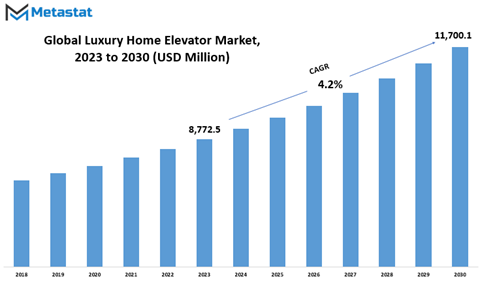
GROWTH FACTORS
The Luxury Home Elevator Market exhibits growth propelled by several crucial factors. These factors play a pivotal role in shaping the market landscape. On the positive side, the increasing demand for luxury home elevators serves as a primary driver. Homeowners, in their pursuit of convenience and modern living, find these elevators appealing. Moreover, technological advancements contribute significantly to the market's upward trajectory. The integration of cutting-edge technologies enhances the functionality and safety features of luxury home elevators, thereby attracting more consumers.
Despite these encouraging aspects, challenges loom over the market. Regulatory hurdles and the need for compliance with safety standards present notable obstacles. Navigating through these regulatory complexities can impede the growth of the luxury home elevator market.
Another factor casting a shadow on market expansion is the economic constraints faced by potential consumers. The high initial costs associated with installing luxury home elevators might deter some interested homeowners. Affordability remains a critical concern, influencing the purchasing decisions of prospective buyers. The growing trend of home automation and smart living spaces presents a promising avenue. Luxury home elevators, when integrated into these smart home systems, align with the contemporary lifestyle preferences of consumers.
The Luxury Home Elevator Market experiences a dynamic interplay of growth factors and impediments. The demand for modern living solutions, driven by technological advancements, propels the market forward. However, regulatory complexities and economic constraints pose challenges. Amidst these, the integration of luxury home elevators into smart home setups emerges as a beacon of opportunity, promising a bright future for the market.
MARKET SEGMENTATION
By Type
The Luxury Home Elevator Market is sorted into different types, specifically the Single Passenger Residential Elevator, Two Passenger Residential Elevator, and Three Passenger Residential Elevator. In the Luxury Home Elevator Market, types play a crucial role, and these are classified into Single Passenger Residential Elevator, Two Passenger Residential Elevator, and Three Passenger Residential Elevator.
When considering the Luxury Home Elevator Market, the types are key factors, and they include Single Passenger Residential Elevator, Two Passenger Residential Elevator, and Three Passenger Residential Elevator.
In the Luxury Home Elevator Market, the differentiation lies in types, namely Single Passenger Residential Elevator, Two Passenger Residential Elevator, and Three Passenger Residential Elevator.
In the Luxury Home Elevator Market, the focus shifts to types, and these encompass Single Passenger Residential Elevator, Two Passenger Residential Elevator, and Three Passenger Residential Elevator.
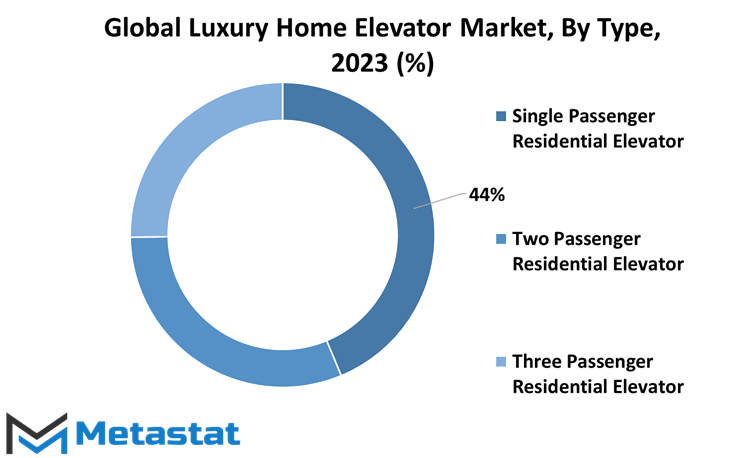
By Application
The Luxury Home Elevator Market is categorized based on its applications, specifically High-Rise Apartments and Luxury Condominiums. This classification helps in understanding where and how these elevators are utilized, catering to the distinct needs of these two types of residential structures.
High-Rise Apartments, as one of the application segments, refers to tall buildings with multiple floors, commonly found in urban settings. These buildings house a significant number of residential units, and the installation of luxury home elevators becomes a practical and sought-after solution. Residents in high-rise apartments often value convenience, and having an elevator adds a touch of luxury to their living experience.
Luxury Condominiums, on the other hand, are another significant category in the Luxury Home Elevator Market. These are exclusive residential complexes that offer a blend of opulent living spaces and high-end amenities. In such settings, elevators are not just functional necessities but also elements that enhance the overall luxurious ambiance of the condominiums. The installation of a home elevator in luxury condominiums is often seen as a statement of sophistication and modern living.
The segmentation of the market based on applications helps manufacturers and stakeholders tailor their products and services to meet the specific demands of high-rise apartments and luxury condominiums. It enables a more targeted approach in addressing the distinct requirements of these two segments, leading to the development of home elevators that seamlessly integrate with the unique characteristics of each residential setting.
The Luxury Home Elevator Market, categorized by applications such as High-Rise Apartments and Luxury Condominiums, reflects the industry's understanding of the diverse needs within the realm of residential structures. By focusing on these specific applications, the market ensures that the design and functionality of luxury home elevators align with the preferences and lifestyle of residents in high-rise apartments and luxury condominiums, contributing to an enhanced and convenient living experience.
REGIONAL ANALYSIS
The examination of the Luxury Home Elevator market reveals a division based on geography, with North America and Europe standing as the key regions. This geographical categorization offers insights into the market's dynamics and trends within these specific areas.
North America, as a crucial player in the Luxury Home Elevator market, showcases unique characteristics that influence its trends. Factors such as economic stability, consumer preferences, and technological advancements play pivotal roles in shaping the market landscape. The region's affluence and penchant for luxury contribute significantly to the demand for home elevators.
Similarly, Europe, the other prominent region in this market analysis, exhibits its own set of distinctive features. Economic factors, cultural nuances, and architectural preferences create a varied landscape for the Luxury Home Elevator market in this region. The demand for home elevators in Europe is influenced by a blend of modern design trends and historical architectural considerations.
In both North America and Europe, the Luxury Home Elevator market reflects the preferences and economic conditions of the local population. The emphasis on convenience, accessibility, and a touch of luxury in residential spaces drives the adoption of home elevators. This reveals a shared global trend where homeowners seek to enhance their living experiences through the integration of innovative and sophisticated solutions.
The regional analysis of the Luxury Home Elevator market highlights the distinctive characteristics of North America and Europe. By examining the market through a geographical lens, we gain valuable insights into the factors shaping the demand and trends in these regions. The interplay between economic conditions, cultural preferences, and architectural influences underscores the dynamic nature of the Luxury Home Elevator market in these key areas.
COMPETITIVE PLAYERS
The Luxury Home Elevator Market is influenced by key players in the industry, such as TK Elevator GmbH and Savaria Corp. These companies play a significant role in shaping the dynamics of the market. TK Elevator GmbH is one of the prominent players in the Luxury Home Elevator sector. Their contributions and influence are noteworthy, impacting the market's growth and development. Similarly, Savaria Corp. is another key player that actively participates in the industry, contributing to the overall landscape of luxury home elevators.
These companies, through their market presence and activities, contribute to the evolution and trends within the Luxury Home Elevator Market. Their roles extend beyond mere participation, as they actively shape the direction and dynamics of the market.
The Luxury Home Elevator Market, with the involvement of key players like TK Elevator GmbH and Savaria Corp., showcases a competitive landscape. The activities and strategies implemented by these companies influence market trends and consumer preferences. The Luxury Home Elevator Market is significantly impacted by the contributions of key players, including TK Elevator GmbH and Savaria Corp. Their roles extend beyond participation, actively influencing the market's direction and dynamics. The competitive landscape of the industry is shaped by their strategies and activities, highlighting their pivotal role in the overall market scenario.
Luxury Home Elevator Market Key Segments:
By Type
- Single Passenger Residential Elevator
- Two Passenger Residential Elevator
- Three Passenger Residential Elevator
By Application
- High-Rise Apartments
- Luxury Condominiums
Key Global Luxury Home Elevator Industry Players
- TK Elevator GmbH
- Savaria Corp.
- IGV Group SpA
- Mitsubishi Electric Corporation
- Hitachi, Ltd.
- Cibes Lift Group AB
- Aritco Lift AB
- Roys Rise Co.
- Fujitec Co., Ltd.
- Fox Valley Elevator
- Garaventa Lift Group
- Pneumatic Vacuum Elevators
- RAM Elevators + Lifts Inc.
- Schumacher Elevator Company
- Inclinator Company of America, Inc.
WHAT REPORT PROVIDES
- Full in-depth analysis of the parent Industry
- Important changes in market and its dynamics
- Segmentation details of the market
- Former, on-going, and projected market analysis in terms of volume and value
- Assessment of niche industry developments
- Market share analysis
- Key strategies of major players
- Emerging segments and regional growth potential



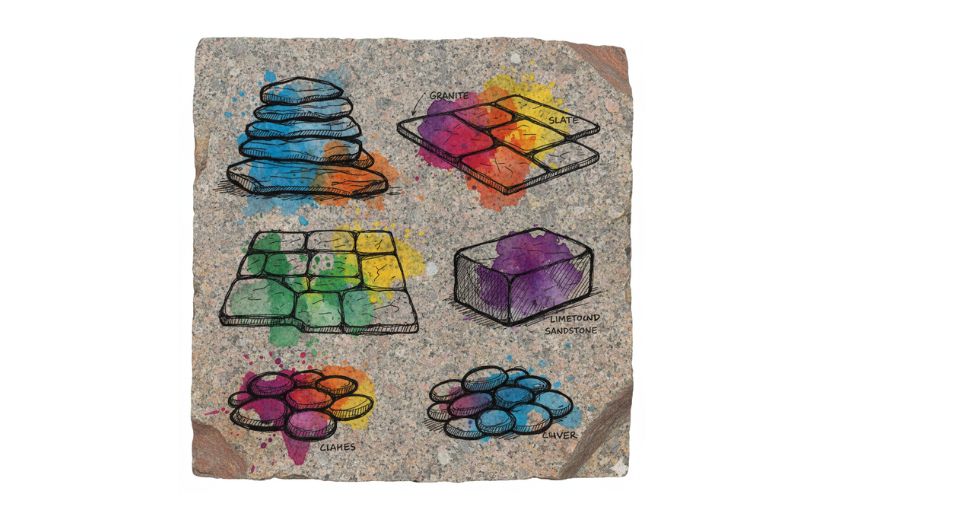
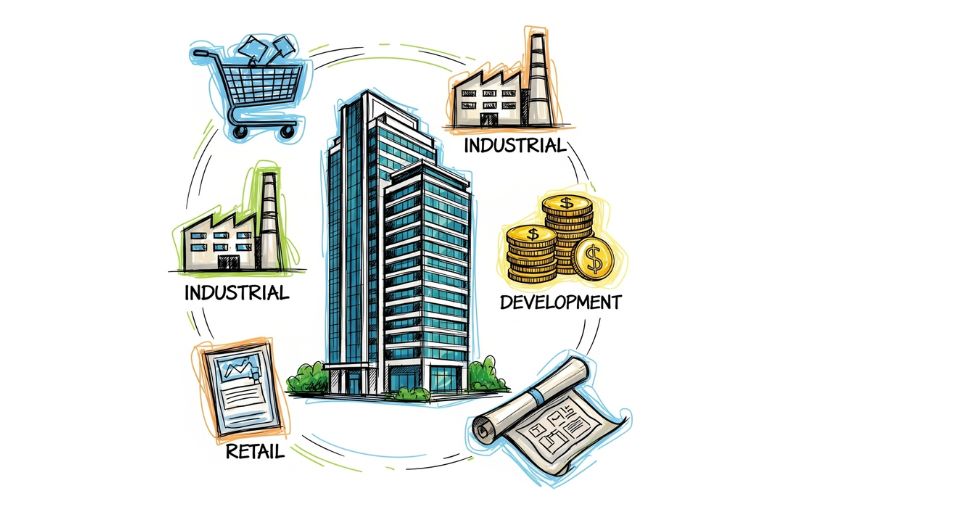
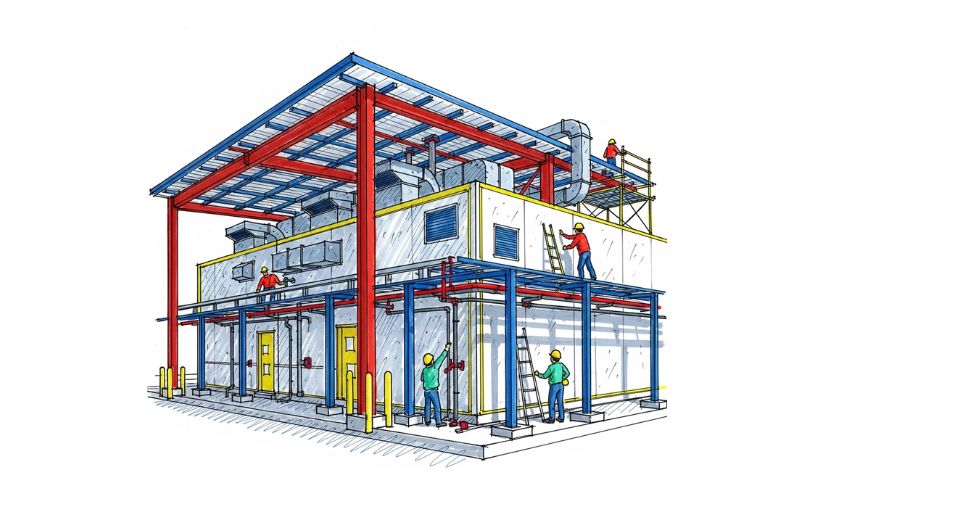
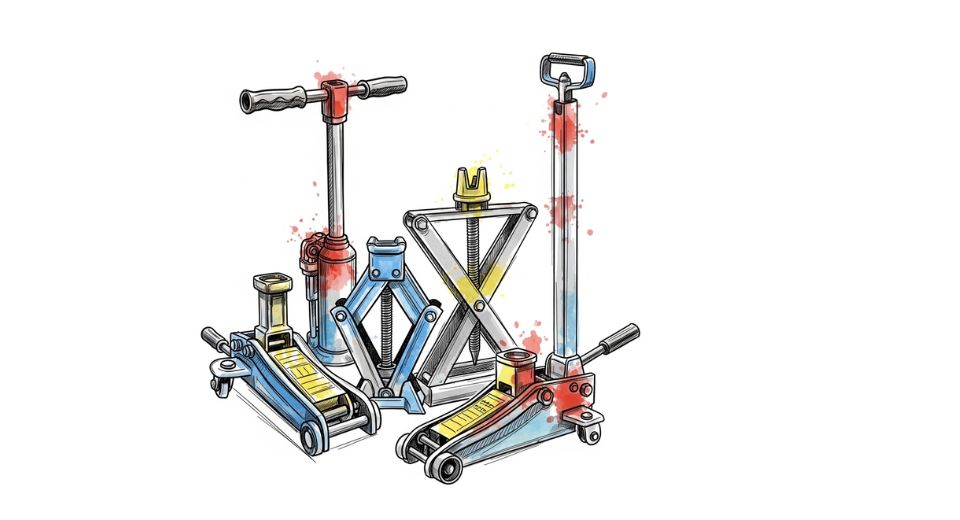

 US: +1 3023308252
US: +1 3023308252






